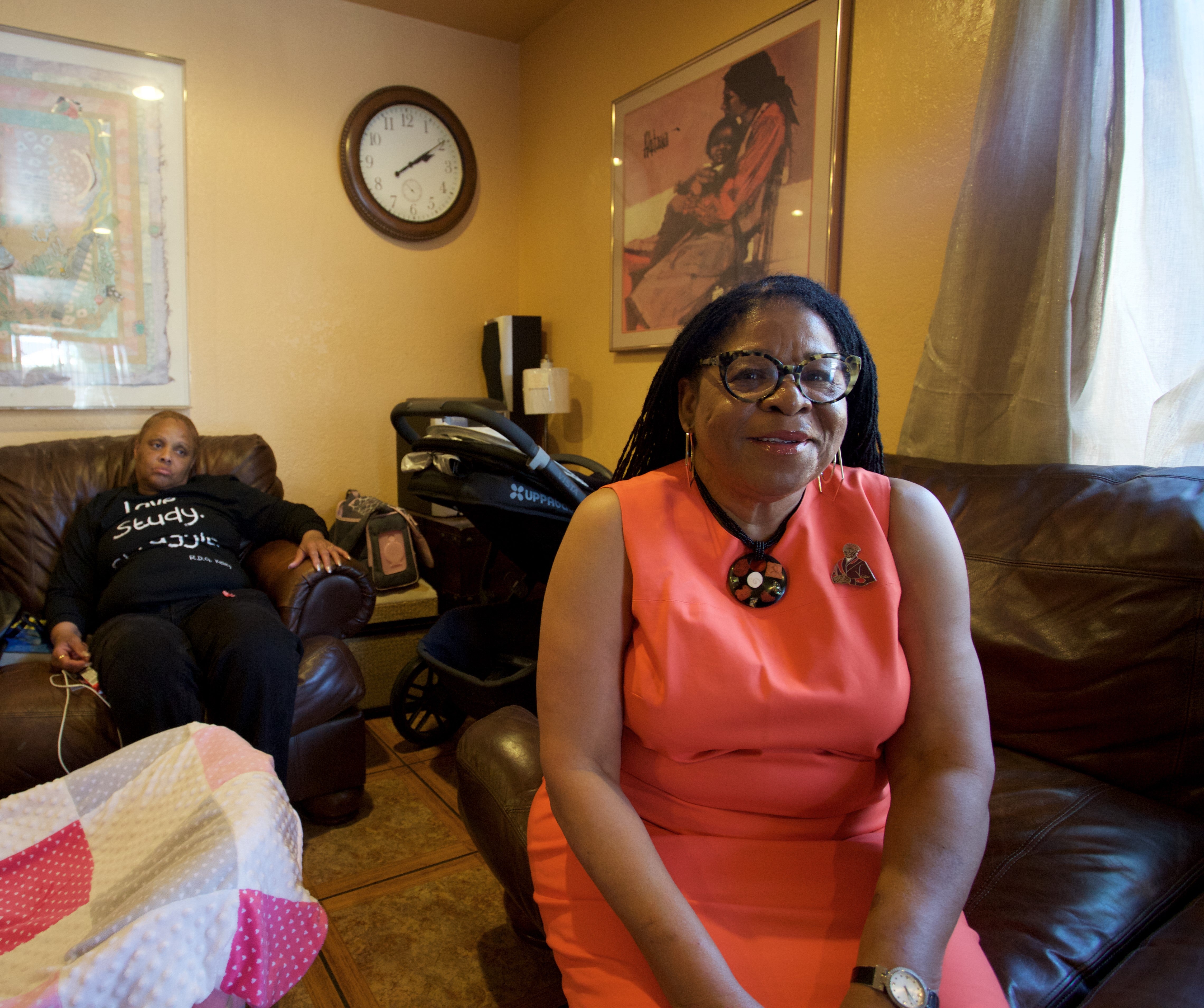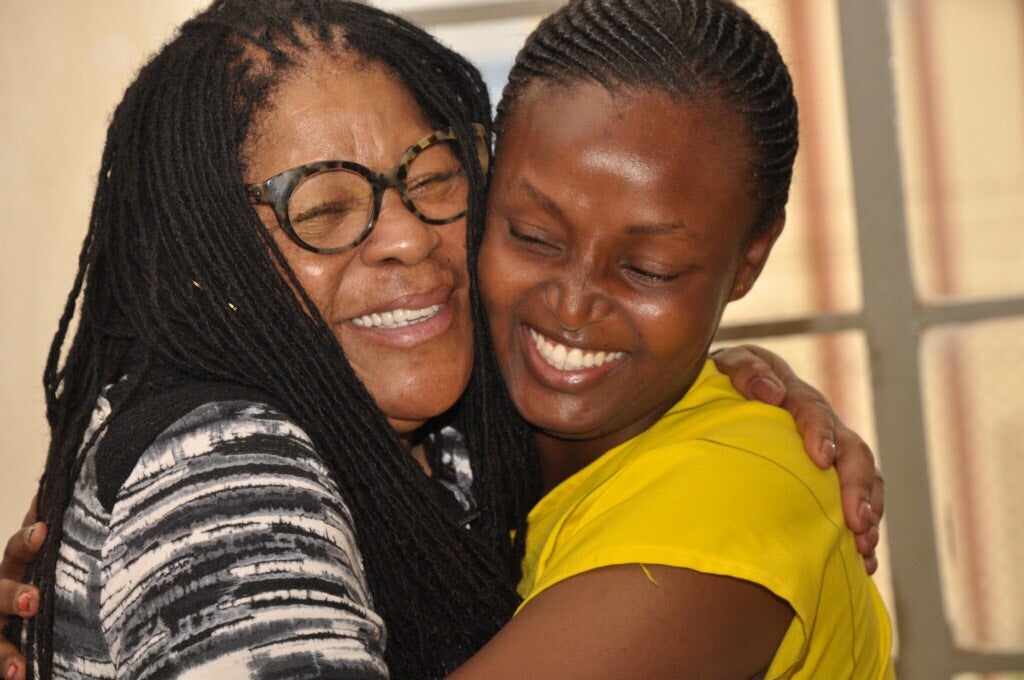It took about 16 years of being in and out of prison before Susan Burton got access to the resources she needed to heal from the excruciating difficulties life handed to her.
Once she was on that path to healing, she wanted to ensure that other women making their way out of the system, wouldn’t face the cycle of reincarceration that she had. So, she first started by saving up enough money to get a little home, and then she’d go to bus stations where women leaving prison were often dropped off and offered them a place to live, a safe space until they were able to get back on their feet. Eventually, that project grew until it became A New Way of Life (ANWOL), a nonprofit dedicated to helping women, families, and communities heal from the experiences of mass incarceration.
“I realize I couldn’t take back the years of pain and suffering that I had experienced. But I could help another woman from experiencing reincarceration by providing a safe environment and a community where they could belong and resources to help them navigate life. And that’s how A New Way of Life started,” Burton told ESSENCE.
Born in a housing project in East Los Angeles, Burton’s childhood was not an easy one. She suffered from physical abuse, verbal abuse, and sexual abuse. She acknowledged it was a “miracle” that she was able to get through her childhood, but her breaking point came in 1982, when her five-year-old son, Marque Hamilton (affectionally called K.K.), was killed after being run over by an LAPD detective.
Burton began to self-medicate using drugs and alcohol to block out her grief. She was incarcerated for her drug use, and thus began her cycle of being in and out of the prison system.
“No one ever offered any help, any resources, any way to deal with the grief and at that point, the alcoholism or the addiction. I would go to prison, get out of prison and have $200, what they call ‘gate money’ in California. I would try to make a life and I failed,” she explained. “I utterly failed every time. Until October 4, 1997. I found a rehab in Santa Monica in an upscale, beach community, that provided me with support, safety, and resources to begin to heal from all of what life had presented to me.”
What Burton found in that rehab center in Santa Monica astounded her, especially in comparison to what she witnessed in the treatment of people struggling with similar issues within South L.A.
“Instead of going to prison for drug addiction, they would get a court card, or they would be referred to treatment or they would do community service. But they weren’t put in chains and locked in cages and shipped off to prison,” Burton recalled. “I thought about what a concept. I also thought about why the court system never saw anything different for me besides prison. Why no one invested a piece of paper in me and gave me a court card and sent me to AA meetings?”
It was after recovering, that Burton was struck with the notion that she could offer the women in the South L.A. what she got in Santa Monica. A safe place, a safe haven in which to recover.
“The war on drugs had devastated our community in South L.A. Women were being arrested in droves. Just large parts of our female community was being incarcerated due to substance use. And there were no services. There were no opportunities to come back into the community and be supported to rebuild your life,” she explained. “In Santa Monica, there was this…buffet of services, like a huge smorgasbord and you could get whatever you wanted in the way of services. And I just couldn’t understand why they had so much there, and we had nothing.”
“I set out to create an opportunity for people to come back into this community,” she added. “Large numbers of women had been incarcerated out of this community and large numbers were coming back. And clearly, there was a disinvestment in our community and an over-investment in incarceration and policing.”

A New Way of Life first and foremost offers housing to women returning to society. They also offer legal services and family reunification services to help reunite individuals with their children and navigate the Department of Children and Family Services. The organization also offers employment services helping people find jobs, create resumes, leadership and training development, as well as other opportunities to get involved in the community through voter registration and other civic engagement programs. There are 12-step meetings and therapy, the women are involved in conferences and speaking with elected officials to help create policy and learn how to further advocate for themselves.
“Women who are incarcerated are incredibly resilient and given the opportunity and support, they can really rebuild their lives, find their voice, their meaning and their purpose,” Burton said.
“I hope to show that an investment in people will have different outcomes. The women I’m working with, they deserve an opportunity. They are not throw-away women. They are not throw-away people,” she added. “An investment in women will bring about different outcomes that make our communities safer, that makes our communities healthier and that allows our communities to thrive.”
And Burton is only just getting started. Last spring, she was the recipient of a promoting reentry grant from the Art for Justice Fund, a five-year $100 million grantmaking initiative which is seeking to transform the criminal justice system and work towards solving mass incarceration.
Burton was able to take that grant and work on replicating A New Way of Life’s model and develop a training to create safe houses.
“We’re calling it SAFE Housing Network,” Burton explained. “The SAFE Housing Network will consist of homes throughout the country based on the model at A New Way of Life. I’ve had 20 years of experience with providing reentry support for women and I want to share that knowledge and share our model with other places across the country.”
Burton, who also published a book Becoming Ms. Burton: From Prison to Recovery to Leading the Fight for Incarcerated Women, went on a national tour of prisons between 2017 and 2018. She printed 11,000 copies of the book just for the women inside the prisons. What she realized, during these visits, was that women were just being released – just like she was once upon a time – with nowhere to go, and no way to pull themselves up.
That is what prompted her to start this larger project as a part of A New Way of Life.
“I believe that if women have a place to go to, that they will be able to make better lives for themselves and better lives for their children. I’m not talking about a handout. I’m talking about a hand up – to help women stand and be a better and greater part of their community, of their children’s lives and build a future. With the Art for Justice money, I’ve created the training. One of the first homes is being developed as we speak in Champagne, Illinois,” she said. “There’s another place that will be going up in New Orleans. And this year, we’ll be doing another training in August. The first training was last year on December 4 and 5. We had 12 individuals from different states that took the training. Out of those 12 individuals, two agencies are replicating. And hopefully, I plan to find five more sites this year.”
Burton is expanding even outside of the U.S. In January she visited prisons and schools that house children with incarcerated mothers in Uganda. While there, she helped an agency called Wells of Hope start a safe home, which is currently up and running.

“Community safety is not locking people up, torturing them, putting them in cages, putting them in chains and then just dropping them back in the community. That’s not community safety,” Burton insisted. “Community safety will consist of creating resources that allow people to be healthy, allow people opportunities for jobs and allow people the opportunity to actually understand and live to their potential.”
“We can spend $60,000, $70,000 [and in] some states $80,000 a year just to incarcerate someone. And on the backend, we have no investment in their returning to our communities. It’s horrible for us to operate in such a blind way,” she added.
This and more is why Burton is determined to do what she does.
“I had been through so much and you know I’m really thankful I landed with my faculties. When I look back, I could have checked out at any moment. But I had been offered and afforded a solution,” Burton said. “For me to just take that solution and walk away while I recognized there were so many others who needed a solution and I felt like I had the opening to lead so many other people through that door to a solution, so many other women… I felt it was my responsibility and my duty to stop pain and suffering in this world with that solution”
She added, “And now, the dream has gotten bigger as to help other people, other women lead other women through that door with the solution.”

